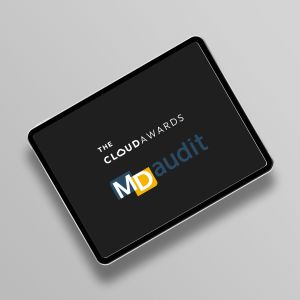Medical claims and billing data is the currency that drives your audit and compliance program. The data you are generating in your own organization is valuable for tracking trends and identifying risk areas. But you can better meet compliance demands and avoid risks by expanding beyond your own database. To accomplish that, you need to benchmark your data against others in the industry.
Why Benchmark
Benchmarking offers a systematic approach to measuring performance and identifying areas that need further investigation. It involves measuring, evaluating, and comparing your results to sources of data that help identify best practice performance. The goal for any organization should be to improve your results to the level of best practice and then beyond.
You can benchmark your performance against real-world data from peer organizations or CMS to better understand your efficacy and identify potential risk areas for further analysis.
By benchmarking your healthcare billing charge data, you can…
- Better understand if you risk being audited if your performance is outside of the expected patterns.
- Identify providers or departments that may need additional scrutiny.
- Discover potential under- or over-coding that might not be apparent when looking at only your organization’s data.
Traditionally, the data most often used for comparison is provided by CMS and generated from the Medicare program. While an important source of data, CMS is not the only source of data you should be looking at. To have a clear picture of how your organization stacks up, you want to be comparing yourself to similar organizations or departments. After all, it will be hard to understand how your pediatric department is doing if you are only able to compare against Medicare claims.
CMS Benchmarking Data
Looking back in the mid to late nighties, CMS data gathering’s focus was on Evaluation and Management utilization along with teaching hospital billing of services. This was their first attempt of data gathering for auditing purposes. Through the years CMS data has evolved and now provides more information to healthcare providers. Mining through numerous large data files in CMS.gov webpage some will observe 3 main data categories available today:
- Services and procedures given to Medicare beneficiaries, including utilization information.
- Payment amounts (allowed amount and Medicare payment).
- Submitted charges organized by Healthcare Common Procedure Coding System (HCPCS) code.
In addition and in January 2021, the CMS Innovation Center announced Primary Care First Cohort. A data model that has an ultimate goal to test whether financial risk and performance-based payments that reward primary care practitioners for easily understood, actionable outcomes will reduce total Medicare expenditures, preserve or enhance quality of care, and improve patient health outcomes.
Even though the above can provide some useful information to Healthcare providers, it lacks some fundamental and useful information i.e. provider coding profiles for other third party carriers, specific comparisons between specialties, pharmaceutical unit utilizations by condition are some examples. In addition, this information is often skewed toward an older population and may not fully represent your patient population. The data often takes months to collect and report, making it outdated before you can even access it.
Despite that, you still must monitor it against your data because that is the database the government is using to track you to ensure compliance. Benchmarking against that data is therefore still relevant or else you can’t tell whether the government is looking at you or not.
Equally important is leveraging current data that better matches your population. Combining that with data from CMS can provide a complete picture and point you in the right direction when it comes to targeting risk and opportunity areas.
Additional Benchmarking Options with MDaudit Enterprise
MDaudit collected data on over 600 million gross charges submitted in 2020 from a variety of organization types such as large academic medical centers, multi-specialty organizations, rural systems and more. While only a small portion of those charges were used in the more than 25,000 audits our customers perform with MDaudit Enterprise, that data is used to build a comparison cohort.
In other words, MDaudit Enterprise makes it possible to compare your organization’s procedure utilization to similar organizations.
CMS data gathering is mostly used for auditing purposes and cost savings, and this alone can negatively influence a provider’s coding profiles when it comes to Medicare patients. Taking into consideration the higher morbidity levels of this patient population (mostly over 65 years old), CMS data is skewed and shows an overall undercoding “bell curve”. Comparing your data to CMS’s will incorrectly depict that the majority of your providers are over-coding.
MDaudit makes it possible for you to benchmark by facility type, specialty, and location type. It ensures a more accurate comparison point because you are comparing to organizations like yours. Beyond the national benchmarking opportunity, you are also able to compare your providers to your own internal specialty departments to identify if a single provider is causing the variance.
Another important factor in looking at benchmarks is the timing of the data. CMS benchmarks are updated annually, and sometimes there are delays in the distribution of the data. MDaudit cohort benchmarking data is updated daily ensuring you are always comparing to the most relevant data. The impact of this is especially important when you consider significant changes in billing patterns that happen throughout the year. In 2020 this would have included the impact of telehealth visits and in 2021 it includes the introduction of the E&M coding changes.
| Key Differences in CMS vs MDaudit Cohort Benchmarking |
| • MDaudit compares charges submitted to all payers, not just Medicare |
| • MDaudit offers a better representation of all specialties |
| • CMS data is skewed due to the mostly 65+ year old patient population |
| • CMS data is updated annually vs MDaudit Cohort data updated daily |
MDaudit recently released a report of auditing and revenue integrity benchmarks and trends that makes it easy to compare the progress of your organization with average results of other healthcare organizations. You can get a copy of the report here.
Which Benchmarks Should You Use?
Both. You need to use CMS data to understand what they see and proactively understand your risk. You also need a way to compare your organization’s metrics against similar organizations to understand how your organization performs and where you may need to focus your efforts to ensure you are meeting best practice metrics (or exceeding them).
MDaudit Enterprise allows you to mine your organization’s billing and remit data to quickly identify billing compliance and revenue risks. The platform’s built-in analytics automatically generate key metrics focused on current risk areas, allowing you to monitor provider billing patterns and benchmark them against peer organizations independent of third-party patient subscription. This in turn helps you prioritize your efforts so you can develop corrective action plans to educate key stakeholders and prevent future losses.
Request a demonstration below to see how MDaudit peer benchmarking works and how MDaudit Enterprise can improve the financial health of your organization.






